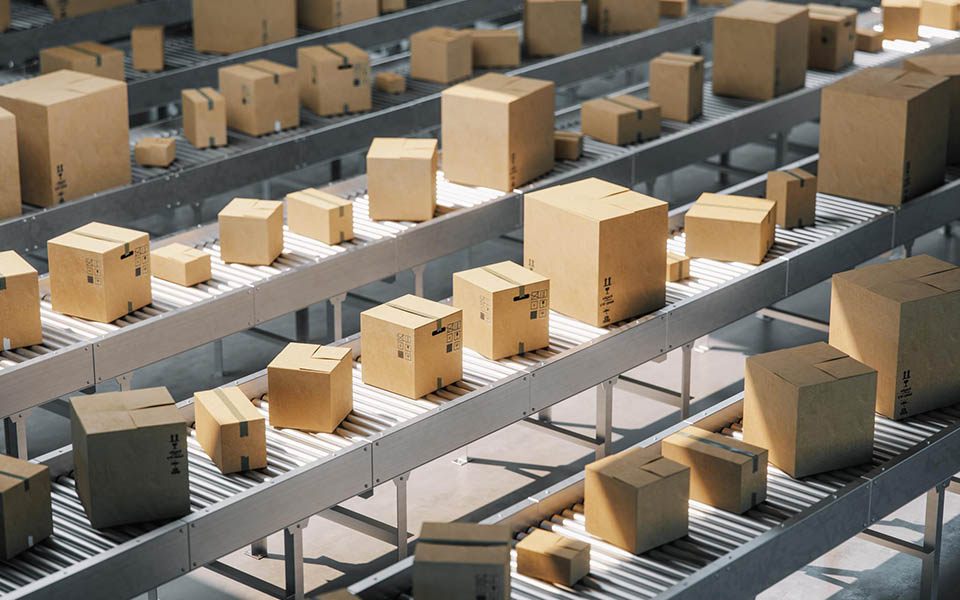The manufacturing sector is at the forefront of economic growth, fueled by rising production demands and key legislative initiatives. In 2024, construction spending hit a record $238 billion, setting the stage for a strong 2025. However, emerging risks like rapid technology adoption, cybersecurity threats, supply chain disruptions and regulatory changes could threaten stability and growth. To stay competitive, monitor these trends and adjust your risk management strategies accordingly.
Technology‘s Role in Transforming Manufacturing
Revolutionizing Manufacturing With Industry 4.0
Industry 4.0 is revolutionizing manufacturing with cutting-edge technology like artificial intelligence (AI), smart machinery, digital sales systems and predictive maintenance tools. A recent survey revealed that 94% of manufacturers plan to increase their technology investments to streamline production, reduce waste and improve energy efficiency.
Data-Driven Decisions for Efficiency
With the ability to process vast amounts of data in real time, these technologies empower manufacturers to make more data-driven decisions. They simplify production processes, cut waste, lower carbon emissions and optimize energy consumption. For example, predictive maintenance tools can monitor equipment performance and flag potential issues before they cause disruptions and costly downtime.
The Metaverse: Exploring New Opportunities
The emergence of the metaverse — an immersive virtual environment — offers manufacturers new ways to test software and train production robots in simulated scenarios. Metaverse tools also help frontline workers perform tasks more efficiently with hands-free operations and voice commands.
Technology Adoption Challenges
As technology evolves, failing to embrace these advancements could leave you vulnerable to market setbacks and missed growth opportunities. But new technology isn’t without challenges. It requires significant capital investment, workforce training and ongoing maintenance. Carefully assess the costs, benefits and risks of adopting these solutions and ensure you have the resources and plans in place to manage them.
Cybersecurity Threats in Manufacturing
As manufacturing technology advances, cyber threats grow. Many innovations are advancing faster than the software designed to protect them, leaving the sector exposed. This reliance on digital operations and interconnected supply chains heightens the risk landscape.
The Rise of Ransomware
Ransomware is a major threat to manufacturers, with cybercriminals locking or stealing data for payment. With an average loss of $353,000 per incident, these attacks can cripple operations and disrupt supply chains. The industry is a popular target given manufacturing’s critical role in global production. These incidents have been rising for nearly a decade and are expected to continue in 2025 and beyond.
Strengthening Digital Defenses
Manufacturers can reduce cyber risks by implementing proactive security measures, including:
- Training employees to recognize phishing attempts and security threats
- Enforcing multifactor authentication (MFA) on all workplace devices
- Deploying advanced endpoint detection
- Ensuring regular software updates and patch management
- Restricting unauthorized access with segmented networks
- Performing routine data backups
- Developing and testing a cyber incident response plan
Supply Chain Concerns
While large-scale disruptions from the COVID-19 pandemic have lessened, manufacturing inventory shortages and raw material sourcing issues are expected to persist. These challenges stem from factors like global transportation delays, geopolitical tensions, cyberattacks, and extreme weather.
Impact on Manufacturing
These supply chain challenges have a twofold impact on the sector. First, raw material shortages can reduce supply chain transparency, leading to communication breakdowns and confusion amid production. Second, delayed raw material deliveries can extend production timelines and increase logistics costs, compounding operational expenses.
Fostering Supply Chain Resiliency
To reduce these risks, manufacturing businesses must build resilient supply chains by:
- Implementing advanced inventory management to track materials effectively
- Maintaining reserves of essential materials
- Strengthening supplier relationships
- Diversifying supply chains with trusted vendors across different regions
- Investing in tracking technology
- Developing contingency plans
Some companies may also consider offshoring or nearshoring. Offshoring involves moving production overseas, while nearshoring shifts production to nearby regions. Depending on the business, these strategies can help reduce supply chain disruptions, improve efficiency and lower production costs.
Regulatory & Compliance Challenges
Recently, increased regulatory scrutiny has emerged at local, federal and international levels, particularly around AI, data privacy and environmental sustainability. Manufacturers must act now—or risk falling behind on compliance and facing serious penalties.
New Standards & Legislation
For example, the U.S. Securities and Exchange Commission (SEC) introduced new standards for publicly traded companies, requiring additional reporting on AI development, carbon emissions, operational waste and green initiatives. At least 15 states have also implemented legislation on AI usage and stricter data privacy laws, impacting manufacturing companies that utilize these technologies or rely on data-driven decisions. As these state-level regulations grow, other states may follow suit.
Global AI & Data Privacy Regulations
Although the European Union’s General Data Protection Regulation (GDPR) has been in effect for years, the rise of AI has prompted regulators to reinforce that these laws apply to sensitive data collected, processed and stored through AI technologies. This development is significant for manufacturers who use AI in their international operations.
Global Trade & Tax Law Changes
Additionally, upcoming changes to global tax laws, tariffs and trade policies could have major implications for manufacturers that source raw materials and production processes, especially with overseas supply chains.
Maintaining Compliance
Manufacturers must monitor these shifting regulations and adjust their operations, or they could face serious fines and penalties for noncompliance. Partner with your trusted legal counsel to review applicable local, federal and international laws and ensure your policies and procedures remain compliant.
We’re Here to Help Manufacturers Avoid Risks
The trends shaping the manufacturing sector in 2025 offer opportunities but also present significant risks. Staying on top of these changes, understanding their impact on your operations, and proactively mitigating risks will position your business for success. For tailored risk management guidance, connect with a member of our team for additional risk management guidance.
© Copyright CBIZ, Inc. All rights reserved. Use of the material contained herein without the express written consent of the firms is prohibited by law. This publication is distributed with the understanding that CBIZ is not rendering legal, accounting or other professional advice. The reader is advised to contact a tax professional prior to taking any action based upon this information. CBIZ assumes no liability whatsoever in connection with the use of this information and assumes no obligation to inform the reader of any changes in tax laws or other factors that could affect the information contained herein. Material contained in this publication is informational and promotional in nature and not intended to be specific financial, tax or consulting advice. Readers are advised to seek professional consultation regarding circumstances affecting their organization.
“CBIZ” is the brand name under which CBIZ CPAs P.C. and CBIZ, Inc. and its subsidiaries, including CBIZ Advisors, LLC, provide professional services. CBIZ CPAs P.C. and CBIZ, Inc. (and its subsidiaries) practice as an alternative practice structure in accordance with the AICPA Code of Professional Conduct and applicable law, regulations, and professional standards. CBIZ CPAs P.C. is a licensed independent CPA firm that provides attest services to its clients. CBIZ, Inc. and its subsidiary entities provide tax, advisory, and consulting services to their clients. CBIZ, Inc. and its subsidiary entities are not licensed CPA firms and, therefore, cannot provide attest services.















